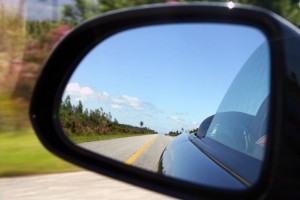It’s true year in and year out that we’re always more interested in the big feature films – especially the ten nominated for best picture – when Oscar time rolls around. And in fact, interest in films as diverse as “American Hustle” and “12 Years A Slave” drove Twitter numbers to record heights a week ago Sunday.
But one of the less talked about stories from the world if cinema is a new focus on “shorts” – those mini-movies that have become neat little science experiments where producers and writers aren’t shackled to length and other restrictions. But how many of them have you actually seen?
Recently on NPR’s Morning Edition, a feature called “Oscar Glow, Today’s Tech Help Short Films Find Their Fandom” pointed to the new reality that digital media advances allow for anyone who’s interested to view these cool little films to do so without any difficulty.
As segment producer Neda Ulaby pointed out, it used to be that regular folks simply didn’t have a chance to even watch these films – a big part of the reason why so few of us probably cared about them. Today, iTunes, and of course, YouTube, provide easy, popular destinations for these “shorts,” making them accessible to just about everyone.
 As I listened to the feature, Carter Pilcher (pictured), president of ShortsHD, a company that is focused on making these little gems available to anyone and everyone said something important for all media – especially the traditional variety:
As I listened to the feature, Carter Pilcher (pictured), president of ShortsHD, a company that is focused on making these little gems available to anyone and everyone said something important for all media – especially the traditional variety:
“…the technology has caught up with content.”
This reminded me of some of the issues we have talked about on this blog for the past nine years, including a post back in 2009 called “Delivering the Donuts.” You may remember the famous Jon Stewart quote when asked how viewers would access The Daily Show years from now:
“We make the donuts; we don’t drive the truck.”
At that time, we suggested that delivery systems were important to content creators. And while Stewart and his team may not have to busy himself with various platforms because it’s hard enough to be brilliantly funny every day, the fact is that distribution matters for the rest of us.
It’s what separated Leno from Fallon – especially when it came to social media. And it’s the reason why anyone and everyone can now watch those Oscar-nominated shorts.
The technology matters, and DJs, hosts, shows, producers, and program directors now need to be better attuned to the “trucks” around them, whether they’re in the form of social media outlets, streams, podcasts, or other distribution channels. If you think you can just worry about the “donuts” and let someone else take care of delivery, you’re leaving audience on the table.
That’s why I cringe every time I hear various pundits give the advice that radio operators need not worry about the “connected car,” but should instead be focusing on creating great radio. Like it will all take care of itself if you just keep focused on the content. Or “if you build it,” somehow the audience will find it.
Of course, the product matters, and in a sea of seemingly infinite choices, if your content sucks, your show is mediocre, or your execution is run of the mill, you have problems. But what if your stuff is amazing? What if your show is great, you make great parodies, your prep is top-notch, and your programming stands apart from all the other nondescript stuff on the FM band?
You still need to understand the changing platforms and delivery systems your audience now spends time with in order to take advantage of these opportunities. Are your listeners going to these places for entertainment and information, and can you better satisfy them in these environments? Is there an opportunity for consumers to share your best work, thus broadening your audience and increasing your awareness and exposure? Do you have a chance to build and maintain great fan relationships, now that there are more than request lines and bar nights in which to interact with them?
And that brings us back to the realities of making great content for three thousand pound consumer electronic platforms…better known as cars.
 More and more, it is becoming increasingly difficult for consumers to simply navigate AM/FM radio on new car dashes and “center stacks.” If you don’t believe me, rent a car every couple weeks like I do or spend an afternoon visiting various showrooms. Where radio once owned the car dashboard, that space is now being shared by hundreds if not thousands of audio outelts.
More and more, it is becoming increasingly difficult for consumers to simply navigate AM/FM radio on new car dashes and “center stacks.” If you don’t believe me, rent a car every couple weeks like I do or spend an afternoon visiting various showrooms. Where radio once owned the car dashboard, that space is now being shared by hundreds if not thousands of audio outelts.
The need for radio broadcasters to develop strategies to interface with automakers and Tier 1 suppliers has never been greater because the technology – at times – can overshadow the content.
If you remember the days when radio stations partnered with local auto dealers to preset their stations on every car on the lot, you have the right mindset for dealing with today’s “connected car” technology, and the people who market them right down the street in your hometown.
The fact is, great content wins. But having a strong understanding of the distribution outlets – how they work and who controls them – can turbocharge your programming, your personalities, and your brand.
There’s never been a better time for radio to seize the moment and connect with the auto industry – another reason why DASH is back this October here in Detroit.
It’s important that radio operators, the RAB, the NAB, and every company big and small in radio keep up with the automotive technology because consumers are now setting the pace.
In the meantime, have another donut.
- Media And Technology In 2025: Believe It Or Not! - April 18, 2025
- In Radio, You Just Never Know - April 17, 2025
- The Secret To Making A Great Podcast (And Great Radio) - April 16, 2025




Leave a Reply